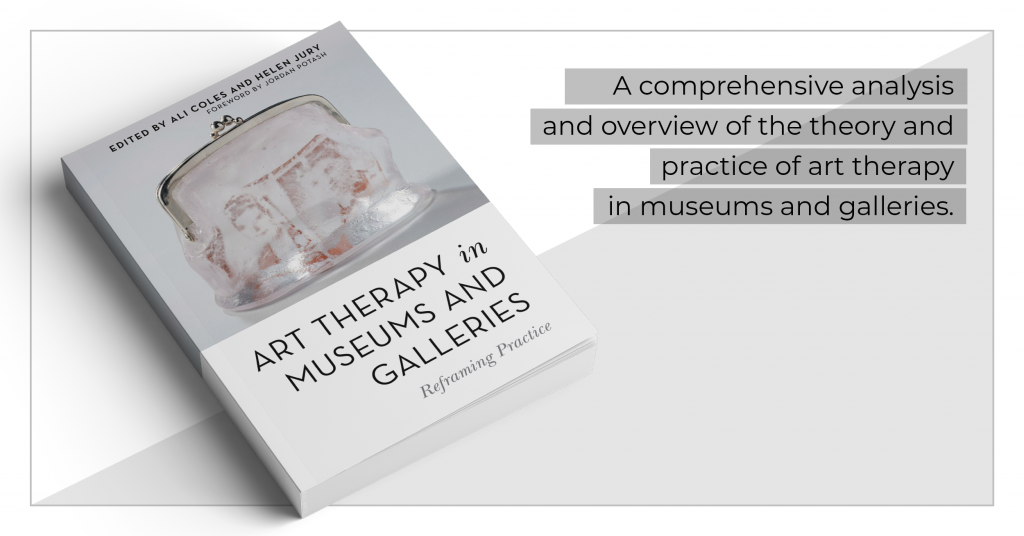Art Therapy in Museums and Galleries: Reframing Practice is the first book to explore the rich intersection between these cultural resources and the practice of art therapy. Co-editors Ali Coles and Helen Jury explain what led them to create this book.

Ali Coles: Before I trained as an Art Psychotherapist, I worked for several years in the museum sector, including at The Natural History Museum in London, UK. I became fascinated by how people reacted to the museum objects and exhibits. The massive dinosaur skeleton in the main hall had a great ‘wow factor’, of course, but it wasn’t only the star exhibits which engaged people. Often it seemed that it was an emotional reaction which drew people to particular objects, not just a desire to ‘know about it’. For example, Victorian cases of stuffed birds got lots of attention, with a range of responses from ‘How beautiful!’ to ‘How awful!’. Someone might be captivated by the delicacy of a crystal, another by the majesty of a slice of giant sequoia. It was the ‘realness’ and physical presence of the museum objects which seemed to make them so powerful. In my own experience of visiting museums and galleries, I often find myself drawn to particular objects without really knowing why. What is it about that exhibit that attracts my attention that day? And what does that say about me? Now, working for the UK National Health Service, I run art psychotherapy groups in museums for adults with mental health difficulties. We use museum objects to inspire self-reflection, expressed and explored through art-making. Connecting with others who were also using museums or galleries for art therapy, it was clear that the time was ripe for a book on the subject – Helen and I were amazed by the number of chapter proposals we received, from all around the world! This is definitely a growth area within art therapy practice.
Helen Jury: The breadth, enthusiasm and international knowledge base of the chapters in Art Therapy in Museums and Galleries: Reframing Practice, shows just how prevalent this work is and how important it is to continue to develop and expand these partnerships.
Museums have always fascinated me, especially rural and specialist museums with cases of rare or unidentifiable objects that appear to have no relationship to one another, but occupy a valuable space for viewing, considering, and wondering. From the Museo del Oro in Colombia, where the beautiful Inca capes made from quetzal feathers were in part eaten by moth, to the eclectic mix of the Frederic Marès Museum in Barcelona, with its displays of crucifixes and ashtrays, and the Pitt Rivers Museum in Oxford that has cases bursting at the seams; artefacts themed together by the loosest of categories. I have always been intrigued by why we collect, and how we consider the role of objects and collections: the longing to take the object from the case, touch, and explore it. For me, this is akin to the experience in Art Psychotherapy, where the materials inspire a psychological response as much as an artistic one; where to handle and manipulate art materials and to create a piece of artwork that forms a visual representation of inner thoughts, is as exciting as the exploration of a hidden cabinet’s contents. As an Art Psychotherapist, the stimulation of the environment for a creative response can be as important as the materials available to work with. Museums offer the opportunity to embed understanding of self in an historical context, giving us a perspective through chronology and belonging in the real world, through identifying with real world objects, in a way we might not have experienced previously. These are all important elements in our work as Art Psychotherapists, enabling clients to further explore their internal worlds.
Ali Coles and Helen Jury
Find out more about Art Therapy in Museums and Galleries here